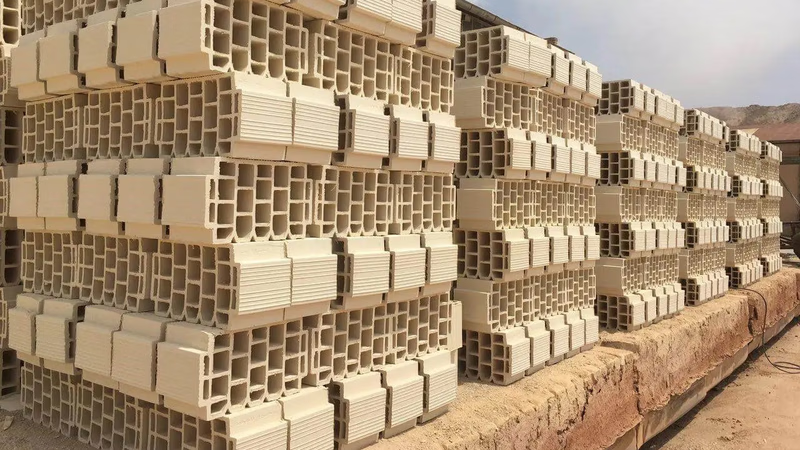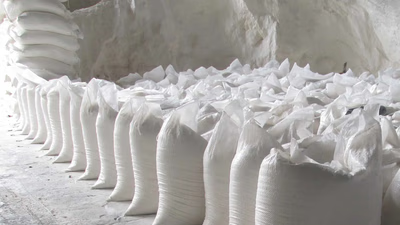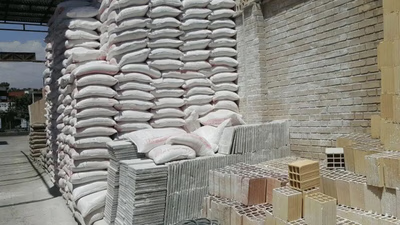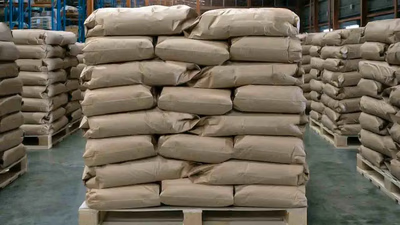
Diverse civil construction materials: concrete, steel, wood, and more.
One of the most widely used construction materials, concrete is a mixture of cement, aggregates (such as sand and gravel), water, and additives. It provides strength, durability, and versatility in construction. Steel is commonly used for structural components in buildings, bridges, and other infrastructure projects. It offers high strength, ductility, and resistance to corrosion. Bricks are rectangular blocks made from clay, concrete, or other materials. They are used for masonry construction, providing strength, thermal insulation, and aesthetic appeal. Wood or timber is used for various purposes, including structural components, formwork, and finishes. It is renewable, lightweight, and has good insulation properties.
Aggregates, such as sand, gravel, crushed stone, and recycled concrete, are used as fillers in concrete, road construction, and drainage systems. Asphalt is a mixture of aggregates and bitumen used in the construction of roads, pavements, and parking lots. It provides a smooth and durable surface. Cement is a binding agent used in concrete and mortar. It reacts with water to form a paste that hardens and binds the aggregates together. Mortar is a mixture of cement, sand, and water used for bonding bricks, stones, or other masonry units together. Glass is used for windows, facades, and decorative purposes. It allows natural light transmission and enhances the aesthetics of buildings.
Building materials are used in the construction and production of various structures. In the construction of a building, different materials are used which are natural or artificial, raw or combined, and each of them has unique characteristics. Asian construction materials are the raw materials used to build and construct a structure. We are all somewhat aware of these raw materials used in construction and we know that the variety of these materials is very high. Building materials can be divided into raw, artificial, natural, composite and so on.
Familiarity with these materials is necessary in order to draw construction plans and their implementation, so construction activists must be well acquainted with building materials to build a durable and durable structure. The most common materials that have been used from the past to the present and still maintain their position in the architecture and construction industry are wood, cement, metal, brick and concrete.
These materials are used in various projects due to their high strength and cost-effectiveness. In today's modern world, new building materials are produced and marketed by craftsmen who have countless capabilities and advantages compared to old materials. These materials, such as bitumen membranes or liquid coatings, are used to prevent water penetration in basements, roofs, and other areas prone to moisture. These materials are used for protection, decoration, and surface finishing of buildings and structures.
Certain plastic materials, such as PVC (polyvinyl chloride) and HDPE (high-density polyethylene), are used in pipes, conduits, and insulation. Reinforcement materials, typically steel bars or mesh, are used to reinforce concrete structures and improve their tensile strength. These include materials like tiles, metal sheets, shingles, or membranes used to provide a protective covering for roofs. Insulation materials like fiberglass, mineral wool, or foam boards are used to reduce heat transfer, improve energy efficiency, and provide acoustic insulation.
-

Gypsum plaster is a versatile building material widely used for interior finishes, providing a smooth and durable surface for walls and ceilings. It is a key component of drywall systems, offering benefits such as fire resistance and sound insulation. Gypsum plaster is also essential in repair and restoration work, allowing for the patching and leveling of damaged surfaces. Various types of gypsum plaster, including whitewash, micronized, ivory, Gipton, and Siwa plaster, cater to different construction needs, from decorative elements to moisture resistance. Gypsum plaster can be molded into intricate shapes for architectural detailing and is commonly applied in plaster skimming to achieve a uniform finish. Additionally, it is utilized in the construction of false ceilings, concealing services while enhancing aesthetics. Gypsum plaster"s acoustic properties make it suitable for sound treatment in spaces like theaters and studios. Its inherent fire resistance contributes to building safety, enabling the creation of fire-rated structures. The adaptability of gypsum plaster, combined with its various formulations, makes it a crucial material in the Middle East"s construction industry, supporting both residential and commercial projects.
-

Construction sand is essential for concrete and mortar, forming a key part of the aggregate mix used in various construction projects. The rapid growth of the construction sector in West Asia has led to increased demand for sand, necessary for residential, commercial, and infrastructure developments. Countries like the UAE, Qatar, and Saudi Arabia have implemented strict quality standards for construction materials, including sand, to ensure durability and strength. However, local availability varies; some nations depend on imports due to limited natural sources. For instance, Dubai imports sand from Australia for land reclamation projects. Coastal countries like Bahrain and Qatar can source sand locally, but this raises environmental concerns such as coastal erosion. The extraction of sand from riverbeds and coastal areas can disrupt ecosystems and lead to stricter regulations. To address environmental impacts, alternative materials like recycled concrete aggregates and manufactured sand are being explored.
The prices of construction sand fluctuate based on availability, demand, and regulations, affecting overall construction costs. Sustainable sand management practices are being adopted in some West Asian countries to promote responsible sourcing and alternative materials, ensuring the construction industry can meet its needs without compromising the environment.
-

Concrete, steel, bricks, wood, and aggregates are essential materials in civil construction, each offering unique properties. Concrete, a mixture of cement, aggregates, and water, is favored for its strength and versatility. Steel is crucial for structural integrity, providing high strength and corrosion resistance. Bricks, made from clay or concrete, contribute to thermal insulation and aesthetics. Wood is valued for its renewability and insulation properties, while aggregates serve as fillers in various construction applications. Asphalt is used for paving, ensuring durability and smooth surfaces. Cement acts as a binding agent in concrete and mortar, while glass enhances natural light and aesthetics in buildings. Understanding these materials is vital for construction professionals to create durable structures.
The industry also sees innovations with new materials like bitumen membranes and plastic composites, which improve moisture resistance and insulation. Familiarity with both traditional and modern materials is essential for effective construction planning and execution.
-

The Middle East"s construction sector is thriving, fueled by urbanization, population growth, and ambitious development plans. Major cities like Dubai, Abu Dhabi, and Doha are undergoing extensive construction, including skyscrapers and infrastructure projects, driven by government investments aimed at economic diversification. The region"s hosting of mega-events, such as the Dubai Expo 2020 and FIFA World Cup 2022, has further increased demand for building materials. A notable trend is the shift towards sustainable construction practices, with a rising interest in eco-friendly materials and energy-efficient designs. The Middle East is a significant player in the global cement market, exporting millions of tons of clinker, with Iraq being the largest buyer. The building materials market in West Asia includes both locally produced and imported materials, with local production focusing on cement, steel, and ceramics. The competitive landscape features both local companies and international suppliers, catering to diverse material preferences influenced by regional regulations and economic conditions. Advanced construction technologies, such as 3D printing and modular construction, are being adopted to enhance efficiency. Investments in infrastructure development are also substantial, requiring a wide array of building materials, thus presenting lucrative opportunities for suppliers and manufacturers.
-

Cement is a crucial material in construction, with various types serving specific purposes. Ordinary Portland Cement (OPC) is the most widely used, suitable for general construction. Blended cements, like Pozzolanic Portland Cement (PPC), enhance durability and are ideal for aggressive environments. Rapid Hardening Cement is designed for projects requiring quick strength gain, while Sulphate Resistant Cement protects structures from sulfate attacks. High Alumina Cement offers heat resistance for high-temperature applications. Other types include Colored Cement for aesthetic finishes, Refractory Cement for extreme conditions, and Waterproofing Cement for moisture protection. Each type of cement is formulated to meet specific construction needs, ensuring structural integrity and longevity. The choice of cement impacts the overall performance of construction projects, making it essential for builders to understand the properties and applications of each type.
-

Clay is essential in construction, primarily for producing bricks and blocks. It is mixed with water, shaped, and fired to create durable materials. Clay bricks are favored for their thermal insulation and aesthetic appeal, making them ideal for load-bearing walls and facades. Traditional construction techniques like adobe and rammed earth utilize clay mixed with sand and organic fibers, resulting in sustainable structures with excellent thermal mass. Clay also serves as a plastering material, offering breathability and insulation for various surfaces. Additionally, clay roofing tiles are popular for their durability and weather resistance, particularly in hot climates. The soil"s composition, including clay"s fine grains, affects its construction properties. Clay"s ability to stabilize temperature in buildings enhances energy efficiency.
It is also used in drainage systems due to its corrosion resistance. Beyond construction, clay is utilized in landscaping and as a natural liner for landfills. Its thermal insulation properties are harnessed in lightweight clay blocks and aggregates. In geotechnical engineering, clay stabilizes soil and prevents erosion. Eco-friendly clay-based paints are emerging as alternatives to conventional options, promoting healthier indoor air quality. The versatility of clay in construction and landscaping highlights its importance in the Middle East"s trade landscape, particularly within B2B marketplaces focused on regional product listings and verified exporters.






